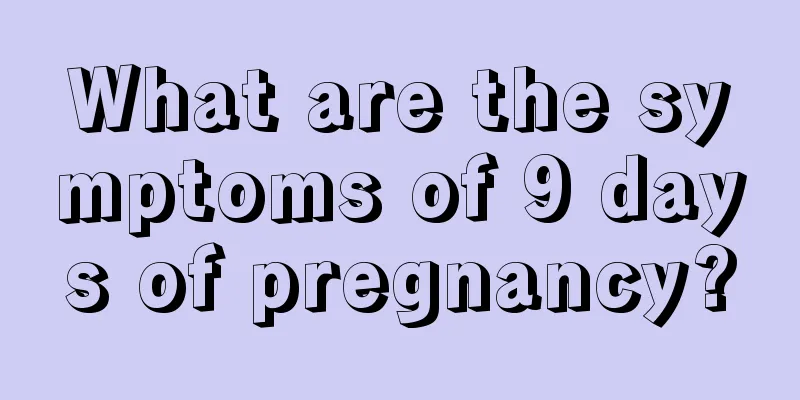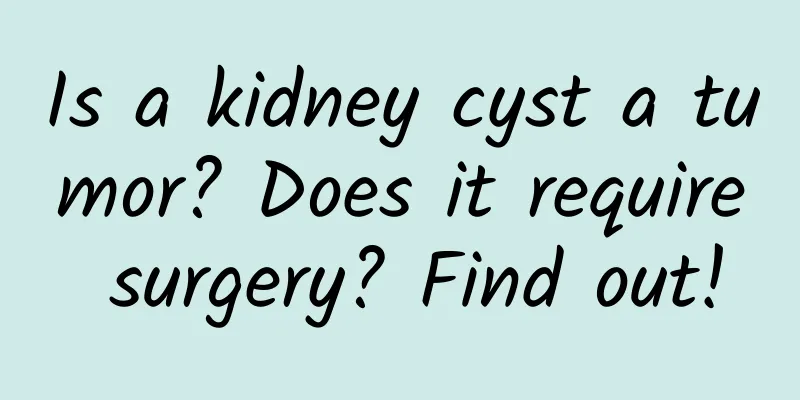What are the dangers of mucosal uterine fibroids?

|
Uterine fibroids are a common disease of the female ovaries, generally occurring in women aged 35-50. The recurrence rate of uterine fibroids is very high. Improper care after uterine fibroid surgery can easily lead to recurrence. Taking large amounts of estrogen foods after uterine fibroid removal can easily lead to recurrence of uterine fibroids. Uterine fibroids are common in women of childbearing age between 30 and 50 years old: the incidence rate is as high as 60%-70%. Not only is the incidence rate high, the recurrence rate of uterine fibroids is also high. The recurrence rate of multiple uterine fibroids is even as high as 60%-70%. Experts point out that as long as there is stimulation from the uterus and estrogen, uterine fibroids are likely to recur. 1. If women with uterine fibroids take excessive amounts of estrogen-containing foods or health products due to discomfort or other reasons, the chance of recurrence of uterine fibroids will increase significantly. 2. The only way to cure uterine fibroids is to remove the "soil" of the uterus, but some patients want to have children, and some patients want to keep their uterus and preserve their rights as women, so they choose uterine myomectomy. Some fibroids are very small and cannot be seen clearly by B-ultrasound examination, so it is difficult to completely remove these small fibroids. These small fibroids gradually grow larger under the action of estrogen, and it looks like a recurrence of uterine fibroids. 3. The recurrence rate of uterine fibroids is related to factors such as the number of fibroids, patient age, and personal eating habits. The younger the patient is at the time of surgery, the higher the possibility of recurrence; the more fibroids there are and the worse the eating habits, the higher the chance of recurrence of uterine fibroids. Mucosal uterine fibroids 1. Vaginal bleeding: A common symptom of uterine fibroids, characterized by excessive menstrual flow, shortened and irregular cycles, and prolonged duration. According to the location of the fibroids, intramural fibroids and submucosal fibroids are most likely to cause uterine bleeding, while subserosal fibroids are less likely to cause menstrual changes. 2. Abdominal mass: When the fibroids grow larger, a mass can be felt in the lower abdomen. Especially when the bladder is full, the position of the uterus rises and the mass becomes more obvious. 3. Compression symptoms: Compression of the bladder or urethra, frequent urination, urination disorder, uterine fibroids compressing the rectum and causing defecation disorder. 4. Pain: severe abdominal pain, accompanied by nausea, vomiting, fever, leukocytosis, and radiating pain caused by tumor compression of nerves. Uterine fibroids can cause abdominal pain Patients with uterine fibroids have abdominal pain, which has certain reasons. The following are the reasons why uterine fibroids cause abdominal pain: Cause 1: Abdominal pain caused by torsion of pedunculated uterine fibroids Whether it is a subserosal pedunculated uterine fibroid or a submucosal pedunculated uterine fibroid, abdominal pain will definitely occur as long as the pedicle torsion occurs, and the degree of abdominal pain is directly proportional to the degree of torsion. This pain often occurs when the body position is changed suddenly, presenting as persistent abdominal pain and forming a passive position. If the twisting is relieved, the abdominal pain will be alleviated or stop. Reason 2: Uterine fibroids compress nearby organs and cause abdominal pain Compression means that uterine fibroids have reached a certain size and hardness, causing a certain amount of squeezing on adjacent organs. In this case, one is that the uterine fibroids protrude outward, and the other is that the position is relatively low, compressing adjacent organs, blood vessels and nerves, causing abdominal distension and pain in a certain part of the body. This pain is mostly persistent or latent abdominal pain. Some patients may also experience leg pain or thigh pain. |
<<: Pay attention to these signs of gestational sac twins after pregnancy
>>: What do you need to do to prepare for pregnancy?
Recommend
Leucorrhea with blood 3 days before menstruation
Many women do not care about their menstrual peri...
What body shape makes women live longer?
Regardless of a woman's weight, having more f...
What causes facial swelling in women?
Facial swelling is a very common phenomenon. Many...
What should women pay attention to during their menstrual period? Remember the three most important points
Women must know how to take care of themselves in...
How big is a mature egg?
The ovulation time and physiological reactions of...
What is the reason for my period not ending after half a month?
Generally, menstruation lasts about seven days. I...
What is the significance of Chinese culture education for young children? What are the main contents of Chinese culture education for young children?
In a broad sense, Chinese studies refer to the cu...
Why does my belly hurt after cesarean section?
Women who have undergone cesarean section need to...
What is the brown sticky discharge?
Experts emphasize that one must not take chances ...
When is the best time to take folic acid during early pregnancy?
When women start to prepare for pregnancy, they s...
Can I get pregnant again after four miscarriages?
In daily life, when some female friends have an u...
How long does it take to be discharged from the hospital after ovarian cyst surgery?
The uterus and ovaries are the main reproductive ...
What is the cause of the small bumps on the vulva?
Sometimes, itching and stinging in the genitals m...
What are the climate types and characteristics of Shanghai? What are the customs of celebrating the New Year in Shanghai?
Shanghai has been a metropolis since ancient time...
How about buying a duplex house? What are the advantages and disadvantages of a duplex house?
As we all know, there are many types of house lay...









